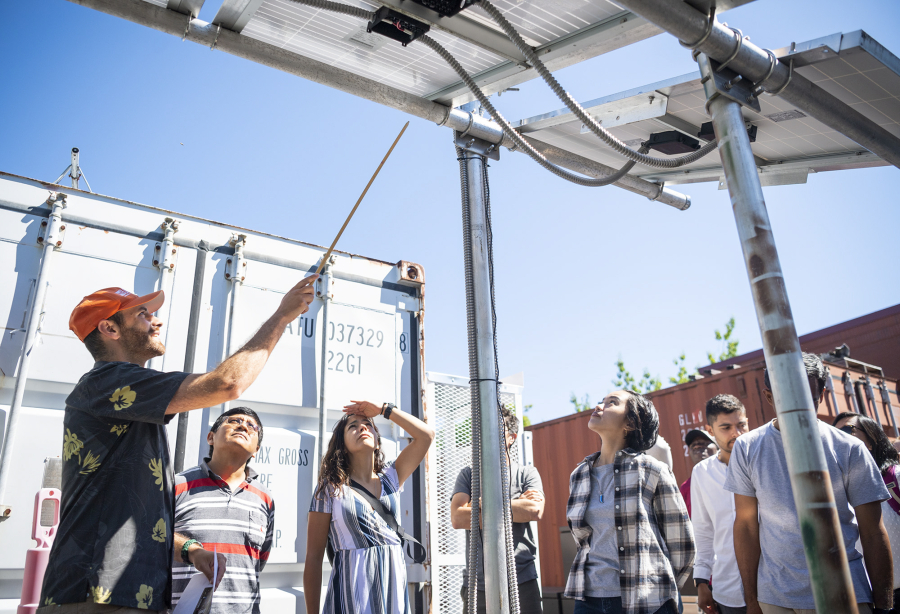A group of international scientists gathered at the Cascades Volcano Observatory this week to learn about volcano hazard monitoring techniques they can bring back to their home countries.
The Cascades Volcano Observatory, one of the U.S. Geological Survey’s five observatories, hosted 13 international scientists for a portion of their eight-week volcano hazards and monitoring course through the Center for the Study of Active Volcanoes, a product of the University of Hawaii and the federal agency.
An array of geologists, seismologists, geophysicists and engineers came from the Philippines, Indonesia, Peru, Chile, the Democratic Republic of Congo, Colombia, Costa Rica and El Salvador.
For six weeks, the troupe ventured through Hawaii and learned about its multiple shield volcanoes before traveling to Vancouver. Here, they spoke with officials in the U.S. Geological Survey’s Volcano Disaster Assistance Program, learning about expertise and equipment that mitigates volcanic hazards.
“Everything is related: We want to save the people,” said participant Nelida Manrique, a Peruvian Geological, Mining and Metallurgical Institute geologist. “I think that is a challenge for us to make people understand everything about (volcanoes).”
The Cascades Volcano Observatory is responsible for analyzing the Cascade Range’s volcanoes, including Glacier Peak, Mount Adams, Mount Baker, Mount Rainier and Mount St. Helens in Washington. The range itself has numerous stratovolcanoes similar to the types visiting scientists are familiar with back home, as opposed to Hawaiian shield volcanoes.
Volcano hazards are location dependent, which is typically near human populations where they cause the most harm and devastation. Ash, poor air quality, mud and lava flows threaten people’s health and safety, making examining volcano activity crucial.
There are several disciplines of volcanology that play an integral role in forecasting eruptions. Exchanging this knowledge between experts is crucial in understanding volcanoes’ behavior and, more importantly, saving lives.
Leo van der Laat, a seismologist based in Costa Rica, gravitated toward the program to learn techniques from specialties other than his own and develop “a system instead of a narrow vision.” He believes many of the experts he met during the training will become his colleagues in the future.
Allan Lerner, Cascades Volcano Observatory volcanic chemist, stood at the head of a classroom Tuesday morning, explaining how gas emission rates, composition and volume fractions can be used to forecast a volcanic eruption.
The tools serving that function — ultraviolet differential optical absorption spectroscopy instruments — sat on a table by his side for the scientists to view. Volcano observatories and research institutions using this equipment form the largest network for monitoring gas emissions from volcanoes, the Network for Observation of Volcanic and Atmospheric Change, or NOVAC.
“This NOVAC program is mostly based here,” Lerner told the group. “We build (the instruments) here and then we send them to you all to put out in the field.”
It’s one example of how volcanologists can apply new knowledge in their country.
Dave Rivera, Philippine Institute of Volcanology and Seismology engineer, focuses on the construction and rehabilitation of remote stations that feed data to its observatories. Program lectures introduced him to strategies for placing instruments, something that varies between countries due to a variety of environmental factors, such as topography or weather.
Currently, the group is analyzing tephra deposits and geologic hazards, such as mud and debris flows, in the Mount St. Helens National Volcanic Monument.
To read more about the group’s training in Hawaii, visit U.S. Geological Survey’s Hawaiian Volcano Observatory website.




